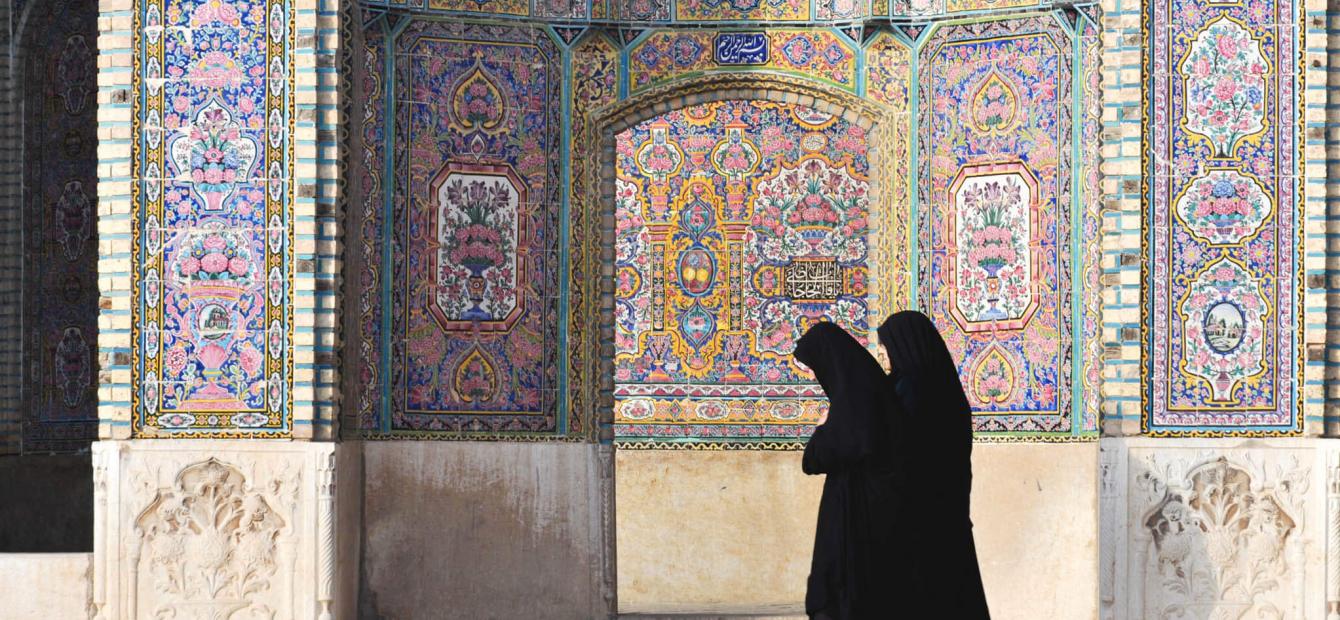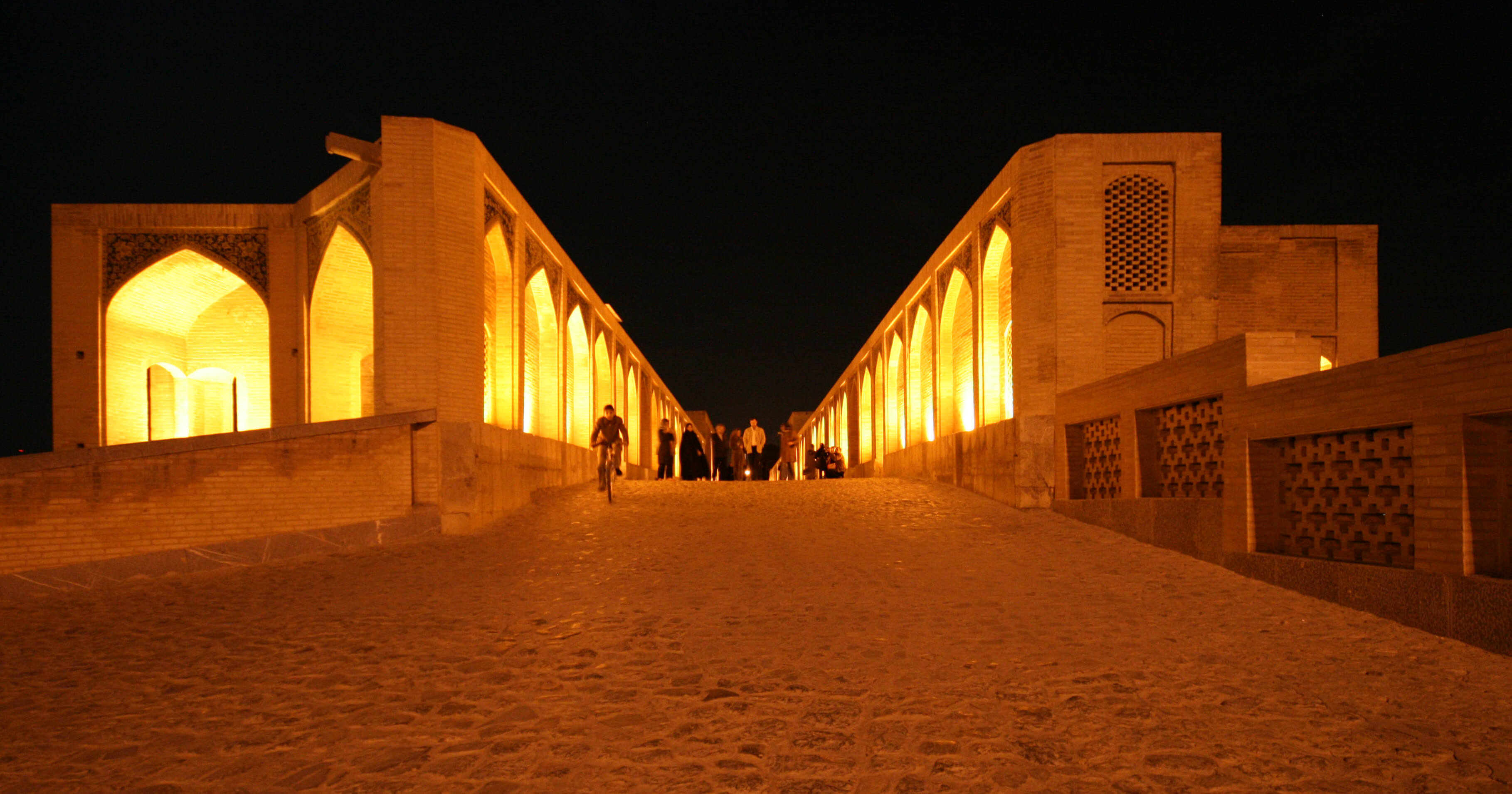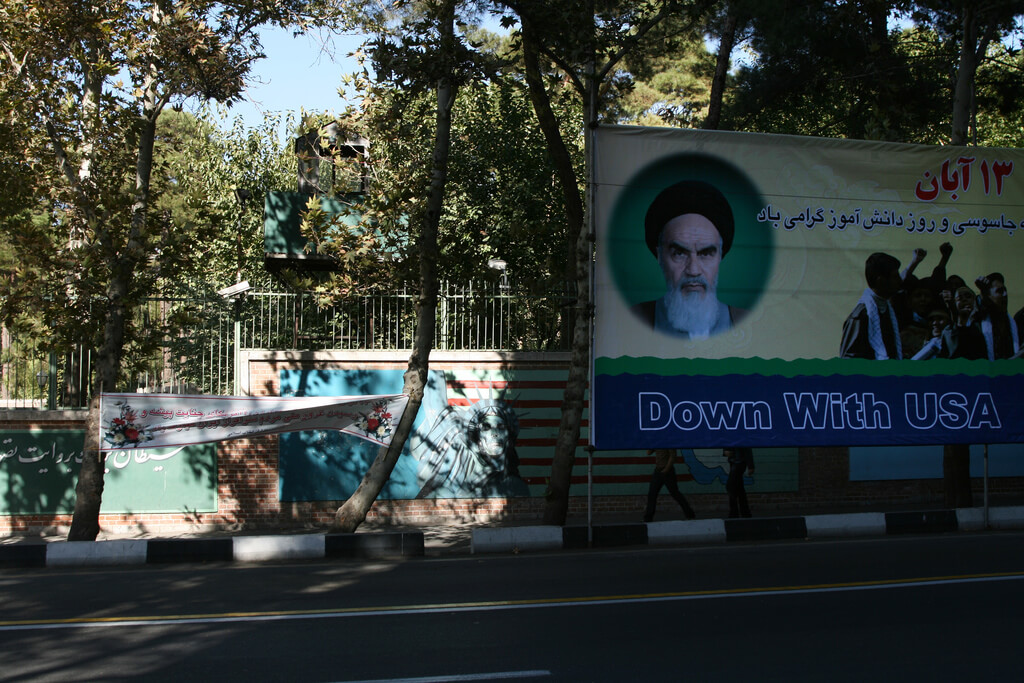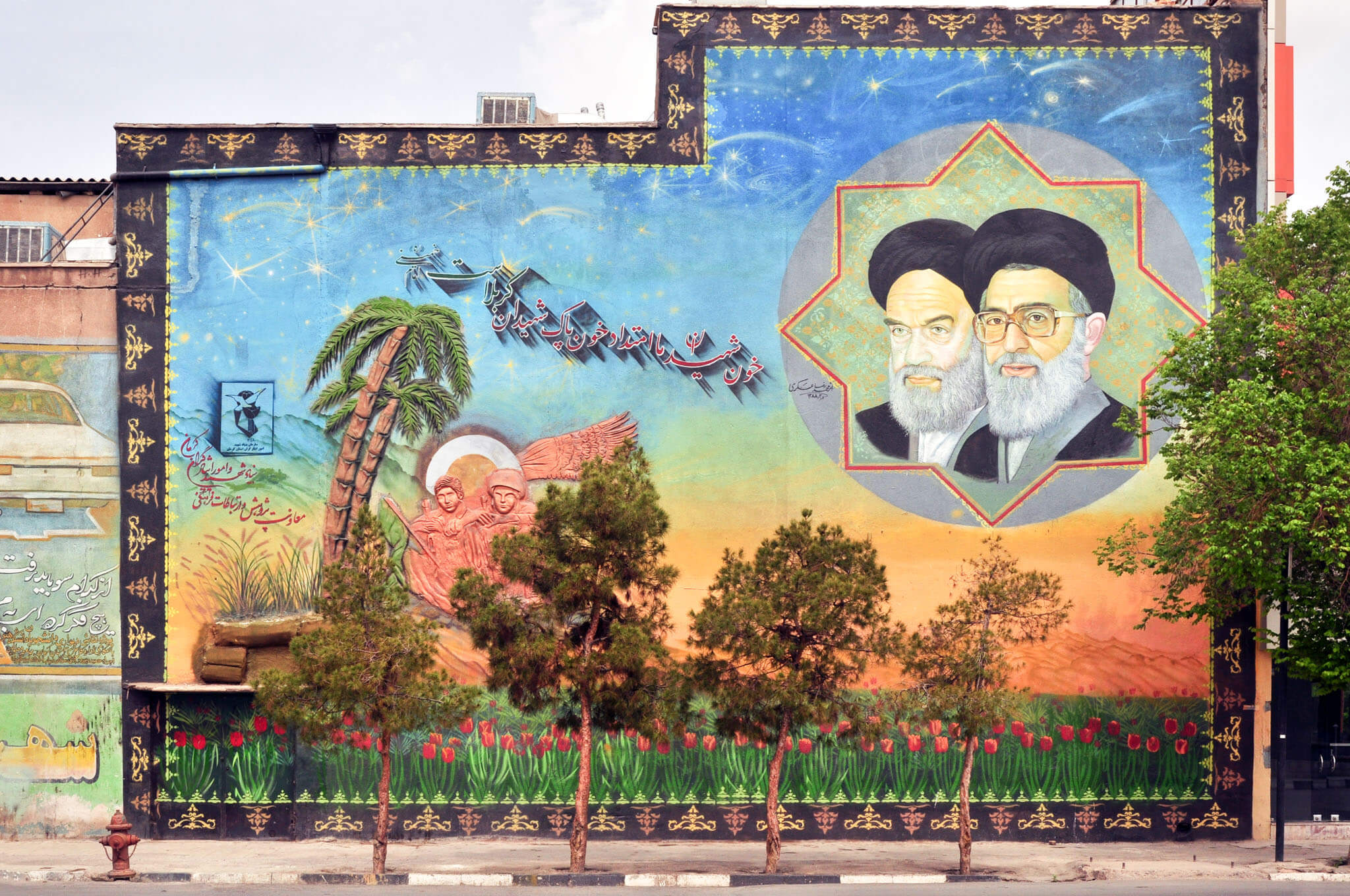
The Iran deal & Europe's crippling geopolitical dilemma
American president Donald J. Trump has left the ‘Iran Deal’, better known as the ‘Joint Comprehensive Plan of Action’ (JCPOA) of July 2015. What are the possible scenarios? Will American and European roads now separate? Will the EU, together with the other permanent members of the UN Security Council, manage to keep the Iran deal alive? And how will North Korea perceive these recent developments? In this article, David Criekemans analyses the geopolitical consequences of Trump's exit out of the ‘Iran Deal’.1
On 14 July 2015, the Islamic Republic of Iran promised to limit its nuclear programme to civilian purposes in exchange for the lifting of sanctions, new trade agreements, and direct foreign investments. The then US president Barack Obama was a key proponent of the nuclear talks. The European Union acted as chief negotiator. The five permanent members of the UN Security Council, as well as Germany and the EU, were all party to the agreement. The full international community backed the deal which, according to the International Atomic Energy Agency (IAEA), has worked up until now.
However, on 8 May 2018, US president Trump envisioned heavy sanctions to be initiated against Iran within 90 to 120 days. More worrisome is that Trump seems to evoke "extraterritoriality". This means that when European banks or companies would continue to trade with Iran, they could be sanctioned or fined through their own economic activities and transactions in the US. Trump uses the interconnectedness of the international financial system to effectively implode the Iran deal while trying to prevent the US from becoming isolated at the same time.
Could European countries activate their national systems of export credit insurance to compensate these US sanctions in order to keep the Iran deal standing? That still remains to be seen. If the other Western powers can no longer offer the advantages that were intended for Iran in the deal, Tehran may no longer feel bound by the JCPOA. Washington on the other hand, has some concerns about the so-called “sunset clauses” of the agreement. These state that after 2025 and 2030 crucial passages of the agreement would cease to exist, meaning that nuclear enrichment could effectively start again.

Tehran's rocket programme has equally not been included in the agreement, and problems have arisen concerning the access to nuclear sites according to the American president. Finally, Trump lashes out at Iran because of its increasing regional activities. Specifically he points to Iran extending its sphere of influence to countries such as Syria and Yemen. Two days after Trump’s withdrawal announcement, a direct military clash took place between Israel and Syria involving rocket exchange between the Golan Heights and alleged Iranian positions in the south of Syria.
The geopolitical dimension of the Iran deal
What are the geopolitical repercussions of Trump's decision? And what are the possible scenarios? In order to answer these questions, one has to have a clear understanding of the geopolitical dimension behind the Iran deal. It is less known that Obama used the JCPOA deal as a geopolitical strategy in order to curb Saudi Arabia's power, without having to say so openly. By 2015, it had become clear that Riyadh had financed radical Sunni fighters in Syria, in an attempt to counter the growing Iranian influence in the region. It is exactly from that breeding ground that the Islamic State (ISIS or Daesh) originated.
Trump uses the interconnectedness of the international financial system to effectively implode the Iran deal while trying to prevent the US from becoming isolated at the same time
Since 1945, a symbiotic relationship between the US and Saudi Arabia has existed; at that time president Franklin D. Roosevelt promised Saudi Arabia security in exchange for oil. As an illustration of that promise, the Gulf War of 1991 immediately comes to mind. President George H.W. Bush drove Saddam Hussein’s Iraqi army out of the oil-rich Kuwait, so as to protect the security and oil fields of Saudi Arabia. By 2015 however, the US had started producing its own shale oil, effectively making Washington less depended on Riyadh. President Obama sought to constrain the Saudi destabilization in the region by striking a deal with Iran. A new geopolitical balance of power was hence created, rubber stamped by the UN Security Council and the international community. After 2015, relations between Israel and the US soured.
Trump pursues an anti-Obama policy and reverses the geopolitical alliances in the region. Riyadh sweetened deals with Trump by throwing in weapons deals of historical proportions. Israel uses every opportunity it can to voice its concern over Iranian influence in neighbouring Syria. Trump contends that Iran no longer complies with the demands of the Iran deal, but according to the International Atomic Energy Agency in Vienna, there is no proof of non-compliance. Proof seems to be irrelevant for Trump; he wants to discard the agreement and keeps pointing to Iran's pre-deal nuclear infringements.
Iran as a promising ally
French president Macron recently tried to change Trump’s mind. He proposed to encompass the JCPOA in a wider agreement concerning Iran’s rocket programme and its increasing regional activities in countries such as Syria. France and Germany seek to trade with this emerging power. Companies such as Renault and Airbus have been queuing in line for the past couple of months. Is a rupture in the Western alliance imminent? Many European countries are rather more concerned about Saudi ‘financing activities’ of diverse radical Sunni groups and hence see Iran as a reliable ally for the future. However, it remains difficult to say such things openly.
The geopolitical balance of power in the Middle East shifts visibly. The Islamic Republic of Iran, with its 82 million inhabitants, is a young and fast emerging nation. Although the younger layer of the population is mainly in favour of the West, this Shia regime has been led by a group of conservative clergymen since 1979. The current regional leader of the Middle East, Saudi Arabia, only counts 28 million inhabitants. Riyadh is very concerned about the emerging Iranian influence. Both countries are involved in a regional power struggle in Syria and Yemen. Even the superpowers may be dragged in as well into that geopolitical joust.

Tehran became the unexpected true winner of the American invasion in Iraq in 2003. After the Sunni minority government of Saddam had been deposed, a Shia majority government seized power in Baghdad. Tehran progressively gained influence in Iraq. A similar scenario is now repeating itself in the Levant. In the Syrian war, Iran supported the Alawi government of president Bashar al-Assad. Special Iranian troops have been reinforcing al-Assad’s regime for years and now seem to be ‘digging in’ for the long haul. After the start of the Russian intervention of September 2015, the Syrian war prompted a curious new “Russian-Shia axis” in the Middle East. But at the same time Russia wants to make sure Iranian natural gas will not become a competitor in the future. How strong that alliance actually is, still remains the question. As far as energy sources are concerned, it seems as if Allah has already picked a side; natural gas has more potential for the future, since it emits less CO2 per energy unit. The geopolitics of energy in the region will soon all be about natural gas. Israel has now also become an offshore natural gas producer, thanks to its cooperation with the American company Noble Energy.
European-Iranian economic cooperation?
Under current technological circumstances natural gas can become a ‘bridge fuel’ towards a renewable energy future. The best way of dealing with the lower ends of downward wind or solar production peaks is to switch a natural gas plant on. The Islamic Republic of Iran disposes of large supplies of natural gas, whereas Saudi Arabia does not. The Saudi military interventions in Syria and Yemen could be interpreted as Riyadh’s ultimate attempt at reshaping the region to its own image. It may be Riyadh’s last chance though, because the geopolitical cards may be stacked differently in ten years. Once natural gas becomes dominant in western energy mixes, Saudi power in the region will sunset. From the perspective of the geopolitics of energy, Iran may well hold the future with its natural gas deposits. Meanwhile Saudi Arabia is racing towards renewables, but it may already be too late for the medium term.
Is Washington waging a form of geo-economic warfare against Tehran, but perhaps also against Europe?
Europe can also forge new economic connections with Iran. France has been exceptionally successful in doing so for the last years. Total managed to broker a 4.8 billion dollar contract for exploiting natural gas fields in southern Iran. Renault even signed a 780 million dollar deal for manufacturing 300.000 cars by 2023. Royal Dutch Shell is also said to invest in the Iranian energy sector. In addition, Iran has signed contracts for airplanes worth billions of dollars with both the European Airbus and the American Boeing. Once ten to fifteen percent of components in such planes are American in origin, as they are in the case of Airbus, Trump’s new anticipated extraterritorial fines may also hit the European airplane builder. Washington wages a form of geo-economic warfare against Tehran, but perhaps also against Europe? A European-Iranian economic cooperation would be very efficient and profitable. The European countries would be less dependent on future American shale gas deliveries after 2020 to diversify away from their current dependency on Russia.
Proxy war with Saudi Arabia
The EU and the United Kingdom have clear economic interests. But at the same time, regional rival Saudi Arabia tried to keep countries such as France and the United Kingdom “on a leash” by forging major weapons deals with them. In November 2017, British Prime Minister May signed a mega deal worth 4.6 billion dollars, whilst being criticized by the international community. May was blamed for her lack of concern of the potential use of these weapons in the war in Yemen, nowadays the stage of a proxy war between Iran and Saudi Arabia. In April 2018, the Saudi crown prince Mohammad bin Salman visited the French presidential Elysée palace and signed contracts with president Macron for a total value of 14.5 billion euros. Suddenly the French president spoke in defence of weapons deals in his speeches during the Saudi visit. And Trump quite literally was “sold” by Saudi Arabia in May 2017, when Riyadh proposed a long-term weapons deal worth over 100 billion US dollars.
The regional struggle for power between Iran and Saudi Arabia is destabilizing the region. European countries and global superpowers are being sucked into the vortex of this geopolitical power struggle. The new balance of power which Obama envisioned, has been cast aside by Trump’s decision. Will the European and American roads part here? These developments might prompt a split in the Western alliance. On the one hand there are Saudi Arabia and Israel, Iran’s arch enemy, supported by the US. On the other hand there are Europe and the Shia-Russian axis which originated as a consequence of the Russian support of the Shia al-Assad regime. Perhaps the European countries will opt for the safest choice, meaning; following Washington once again, although grudgingly? Together with the other permanent members of the UN Security Council, the European countries should try to keep the Iran deal alive though, but the chances for success are very limited.
If the Iran deal can be torn apart overnight by an American president, what incentive does Pyongyang have to broker its own deal with Washington?
Trump apparently leaves a window of opportunity of 90 to 120 days before the sanctions become operational. It seems that European diplomacy has been cast in this “Trump-production” to pull the chestnuts out of the fire. If a post-2025 framework could be agreed upon, would Iran also be willing to just hand over all of its bargaining cards and agree to stop its rocket programme without any deal sweeteners on the Western side? Washington’s third point, curbing the growing regional power of Iran, would be impossible to verify. Saudi Arabia might perhaps like this to happen, but Riyadh’s demography and outdated business model are working against the Kingdom. Tehran can still be temporarily curbed, but for how long?
A diplomatic ‘mission impossible’ ahead
Europe now has to pursue a diplomatic ‘mission impossible’. How to sustain the renewed economic ties with Iran without losing Saudi Arabia during that exercise? And then there is Israel, which could feel emboldened in its position by Trump’s recent stance. Tel Aviv or better ‘Jerusalem’ might take matters into its own hands against Iranian positions in Syria and Lebanon, or even go after the Iranian homeland itself, as the Israeli Prime Minister Benjamin Netanyahu recently suggested at the 2018 Munich Security Conference. If this were to happen, the regional wars in the Middle East would become completely amalgamated by an expanding regional conflict between Iran and Saudi Arabia. A true geostrategic nightmare, because it is unlikely that such a conflict could be contained regionally.

It can be expected that the “Coalition of Three” (US/Saudi Arabia/Israel) will engage in some serious “power politics” in the weeks and months ahead. The recent choice by the American president for John Bolton as his new Security Advisor clearly fits this interpretation. Trump is convinced his mad man-strategy “worked” in North Korea. Now he wants to repeat that same recipe against Tehran. But wasn’t he in favour of regime change in Iran?
And to top it all off, how will North Korea perceive these recent developments? If the Iran deal can be torn apart overnight by an American president, what incentive does Pyongyang have to broker its own deal with Washington? Europe should therefore try to keep the Iran deal alive, but it is about to face a sobering geopolitical ascertainment. Brussels now realizes openly that the geopolitical interests of the US and the EU are not always compatible.
In the new multipolar world-in-the-making, Washington is no longer seen as a beacon of stability, but rather as a source of geostrategic and geo-economical unrest. Brussels’ new geopolitical strategy will have to consist in conducting a new “balance politics” with the other ‘poles’ in the multipolar system, i.e. Moscow, Beijing, Tokyo, London, etc. Washington is slowly but certainly being degraded in the minds of European politicians into being “only one of these poles”.







0 Comments
Add new comment